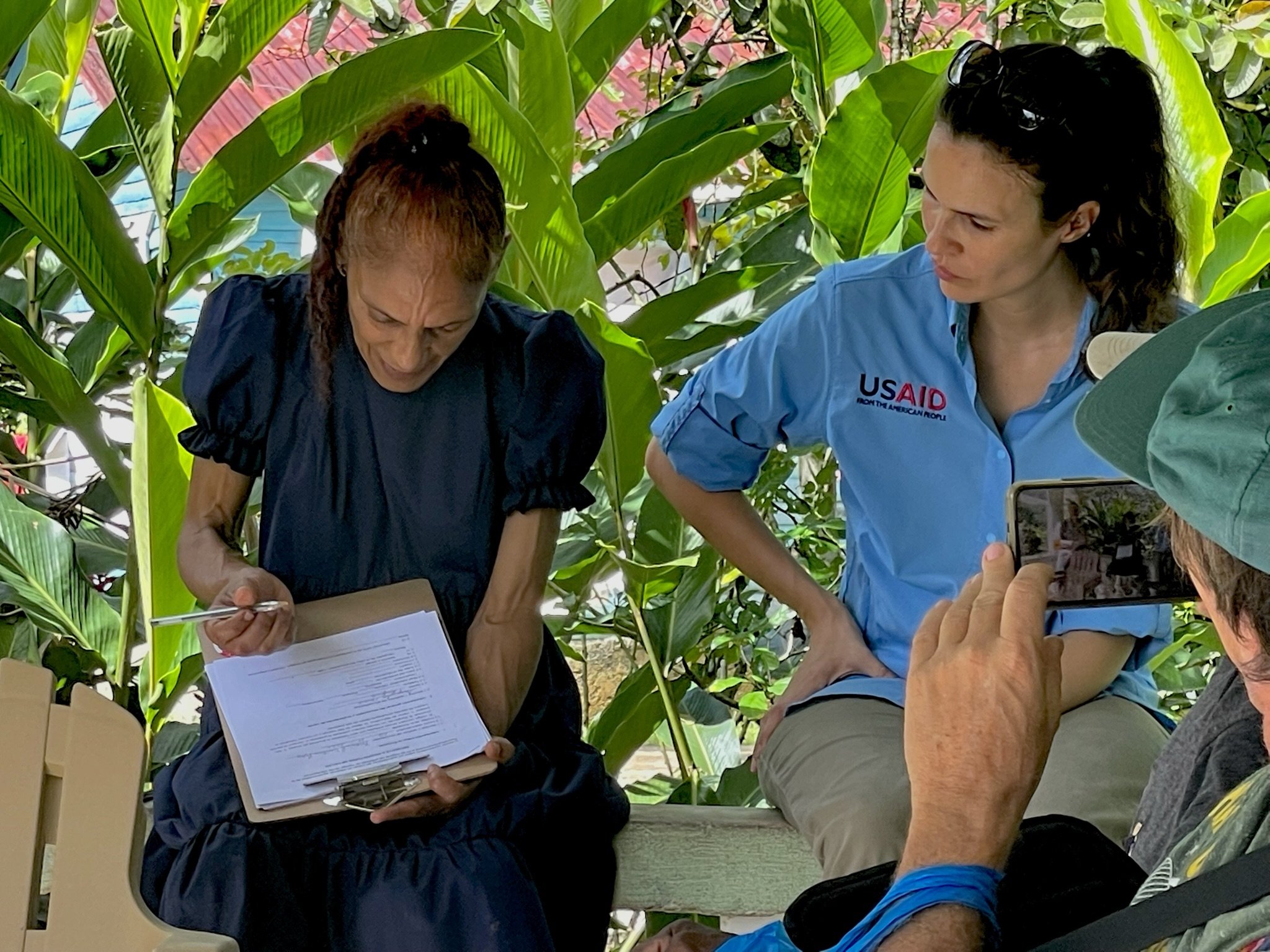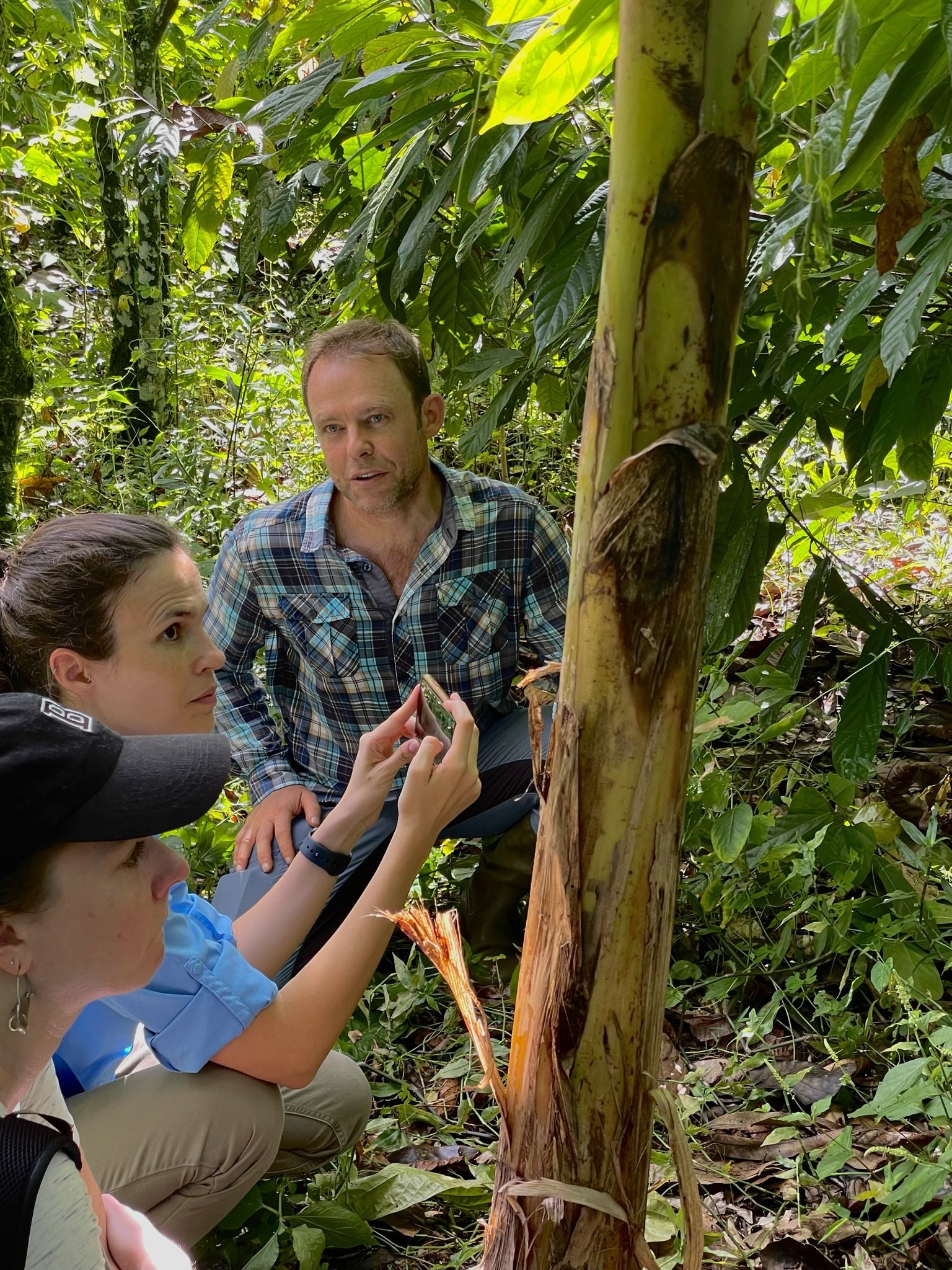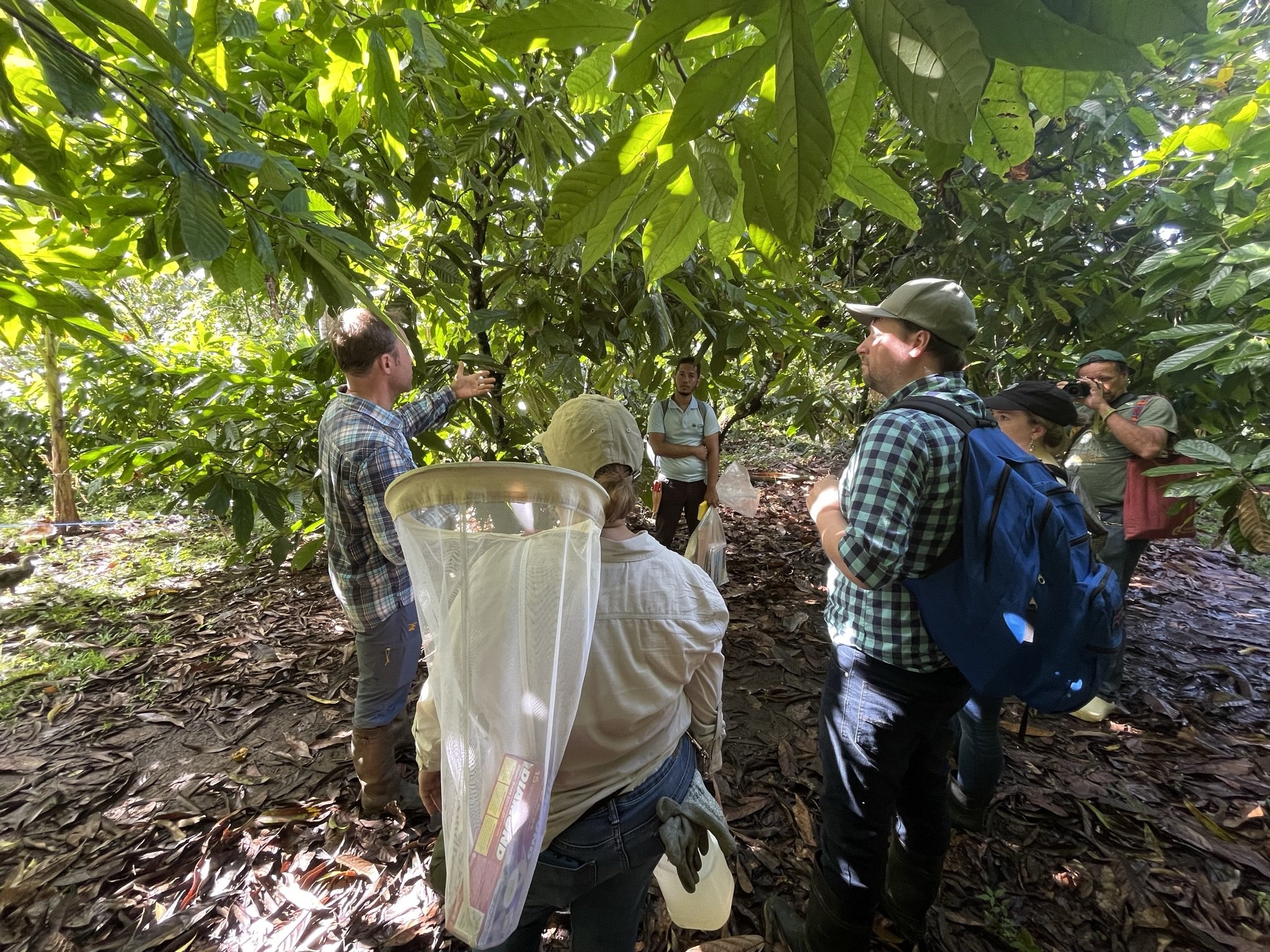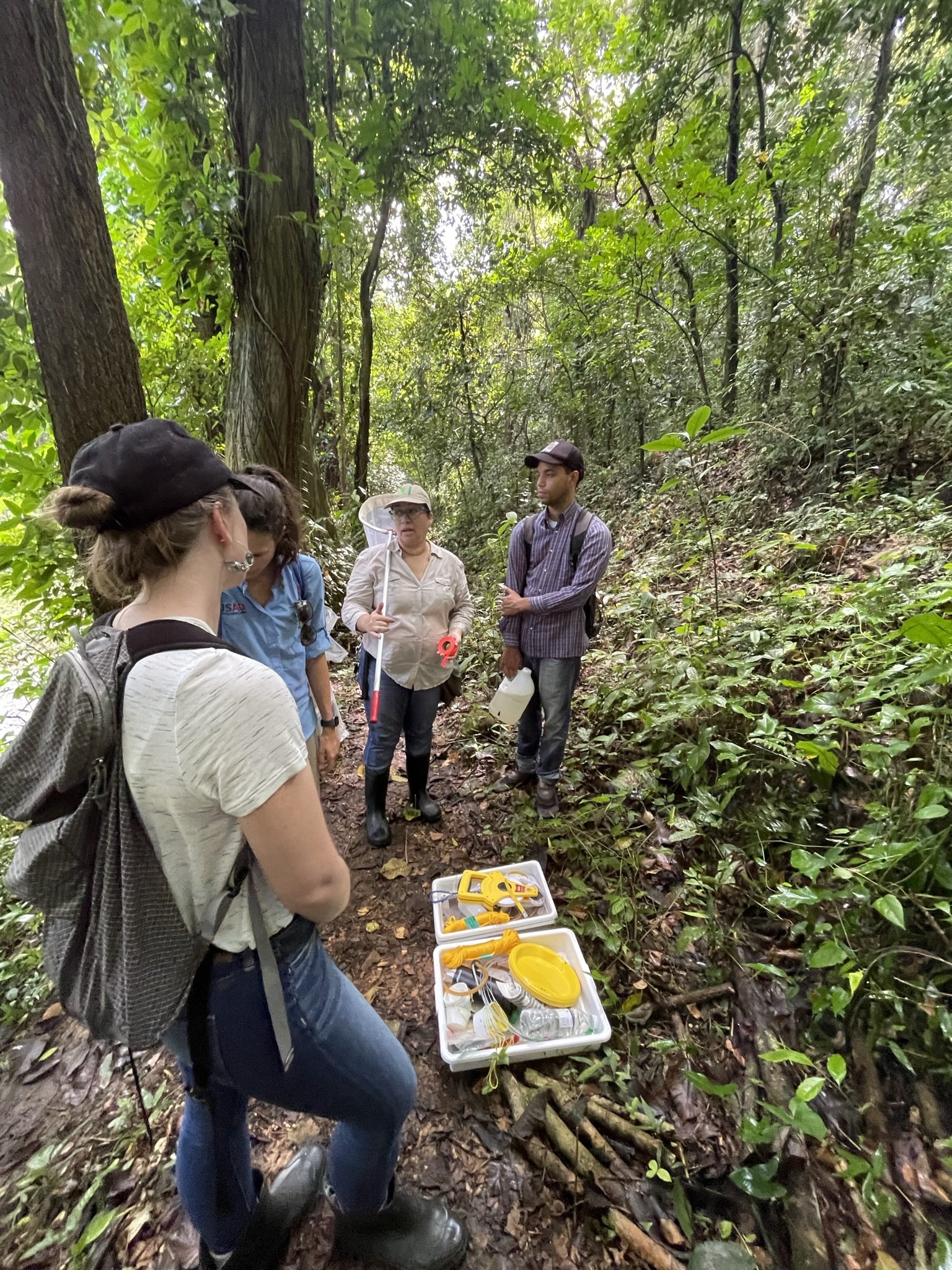Cycle 9 (2020 Deadline)
Creating knowledge on cocoa pollinators in agroforestry systems of the Dominican Republic for improving plantation management practices
PI: Colmar Serra (colmar.serra@gmx.net), Pontificia Universidad Catolica Madre y Maestra with co-PI Sardis Medrano-Cabral, Instituto Dominicano de Investigaciones Agropecuarias y Forestales
U.S. Partner: Justin Runyon, U.S. Forest Service
Project Dates: April 2021 - March 2024
Project Overview
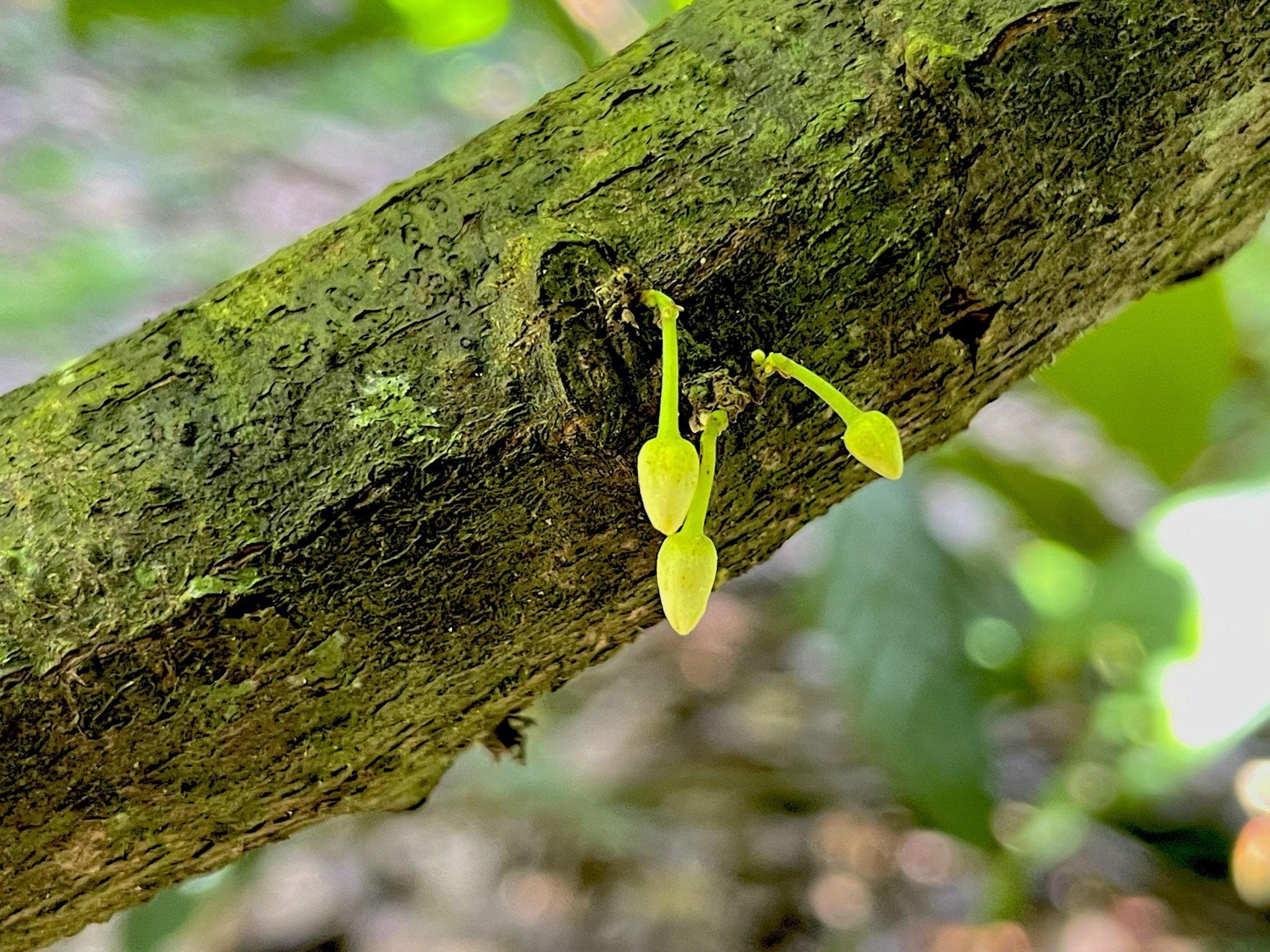 | | Cocoa bud. | 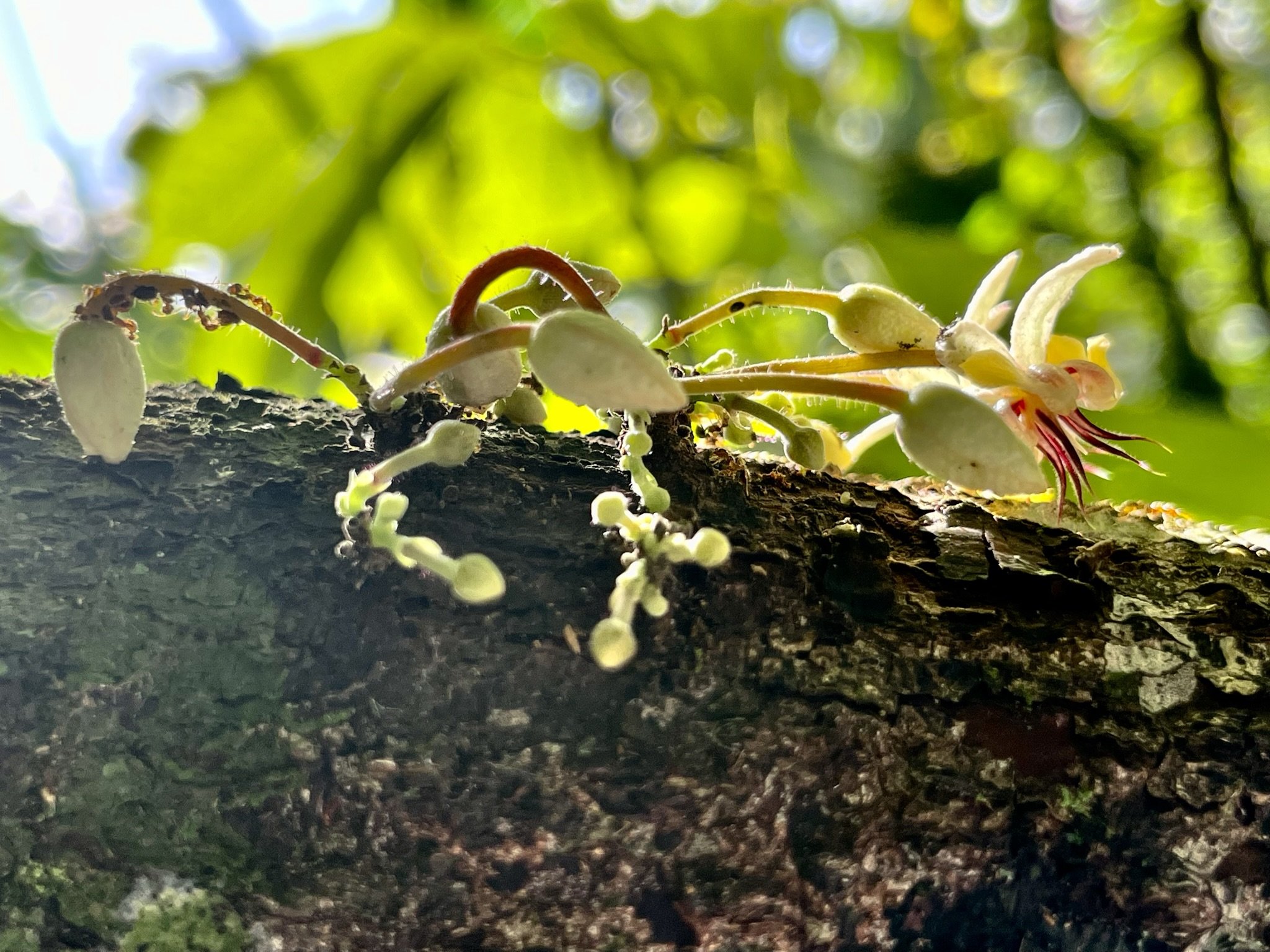 | | Cocoa flowers. Photo credit: Lina Stankute-Alexander (NAS) |
The Dominican Republic (DR) is the world’s primary exporter of organic cocoa with more than 153,000 ha cultivated and 85,000 tons exported in 2018. This commodity plays a strong role in the economy and supports more than 36,000 producers and their families. The vast majority of Dominican cocoa plantations are cultivated under agroforestry schemes. Cocoa-based agroforestry systems (Cocoa AFS) are cropping systems based on a perennial crop, the cocoa tree (Theobroma cacao L.), where farmers intercrop several other annual and perennial crops. In the DR, farmers associate more than 45 plant species with cocoa in heterogeneous patterns, thus creating a variety of habitats for cocoa pollinating insects. These cocoa AFS are known for their biodiversity conservation value and are often found near protected forest patches, where they buffer the transition between forest and agricultural land. However, it has been shown that plant species found in cocoa AFS strongly differ from those found in nearby forest fragments. In general, little is known about cocoa pollination ecology and services, although they appear to be key elements to understand yield functions. Moreover, on-farm habitat management and surrounding landscapes can affect the abundance and efficacy of cocoa pollinators, but this is poorly understood, and more research is needed in order to exploit habitat management and improve cocoa pollination.
The main objective of this PEER project was to understand how both the composition and the efficiency of cocoa pollinators’ communities are affected at plot level by farmers’ practices and surrounding land uses. The researchers analyzed and evaluated several landscapes and practices, including identifying landscape gradients surrounding cocoa plantations in each region, sampling composition, ecological functions and structure of cultivated plants at plot level, and identification of insect communities. The PEER team sought to develop capacity among local technicians, researchers, and cocoa farmers and their families.
Final Summary of Project Activities
The researchers undertook several exploratory trips to identify forest patches adjacent to cocoa farms in three zones: Medina/Loma Verde and Los Bracitos, as well as the provinces of San Cristóbal and Duarte. Within these selected patches, they took a floristic inventory, recording the abundance and diversity of plant species present within 100-sqm plots. They estimated vegetation cover and analyzed biological types and biogeographic status of each species, as well as calculated biodiversity indices.
The PEER team also surveyed 90 Dominican cocoa producers, 30 in each of the three zones, on agricultural practices including agroforestry, plant protection, economic performance, access to credits, commercialization, and other aspects of cocoa production. Students from the Autonomous University of Santo Domingo were trained on techniques for video monitoring of cocoa pollinators, and they helped support PEER team members on field visits. The researchers collected soil and insect samples at nine cocoa plantations and three forest patches in San Cristóbal Province. Work on a variety of related objects is continuing even after the project ended in April 2024, and the PEER team expects to present their findings at a joint meeting of the Caribbean Food Crop Society and Dominican Society of Agricultural and Forestry Researchers in July 2024.
The PEER team has developed collaborations the Loma Quita Espuela scientific reserve and the FUPAROCA foundation, as well as the Cacao Forest project, which provided guidance and logistics in the field for the identification of forest patches and cocoa producers in San Cristobal and Duarte provinces. The project has been presented and included in Cacao Forest’s national strategy for rehabilitation and renovation for Dominican cocoa plantations.
Back to PEER Cycle 9 Grant Recipients
| 





